The Diverse Threats Facing the Snow Leopard
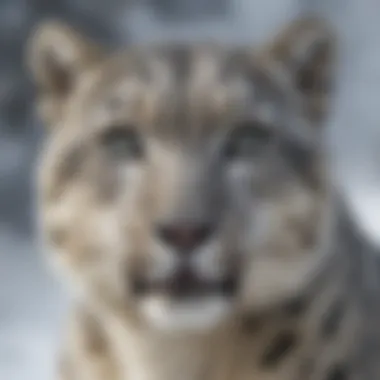

Nature Topic Overview
Snow leopards roam the jagged peaks of the Himalayas and other mountainous terrains in Central and South Asia. They are often dubbed the “ghosts of the mountains” due to their elusive nature and striking, camouflaged fur. However, despite their beauty and fascination, these magnificent big cats face a multitude of threats that jeopardize their survival and that of their habitat. Understanding these threats requires diving deeper into their lives and the challenges they face in a rapidly changing world.
The threats to snow leopards can be broadly categorized into several main areas: habitat loss, poaching, climate change, and human-wildlife conflict. Each of these is more than just a buzzword; they represent real struggles that affect every aspect of life for these animals and their ecosystems. In this section, we will explore each of these challenges in detail, revealing the complexity of their situation.
Fun Facts and Trivia
- Did you know? Snow leopards have thick fur on their paws that acts like natural snowshoes.
- These cats can leap up to 50 feet in a single bound! That's like jumping over a whole bus!
- Each snow leopard has a unique pattern of spots on their fur, much like how humans have unique fingerprints.
Visuals can make learning fun! Imagine a coloring book page where young readers can color a snow leopard in its snowy habitat. This activity not only teaches them about the animal's appearance but also about its environment.
Wildlife Explorations
Snow leopards coexist with a variety of other creatures in their rugged habitat. From the agile blue sheep to birds like the lammergeier (or bearded vulture), these species all play a role in the intricate web of life. For instance:
- Blue Sheep: These are a main source of food for snow leopards and can escape predators using their exceptional climbing abilities.
- Himalayan Tahr: With their thick fur and strong bodies, these goats are another prey for the snow leopard.
Imagine a fun quiz where children must match these animals with their favorite traits or behaviors.
Environmental Awareness
Understanding why we need to protect snow leopards is crucial. The loss of this big cat impacts not just its immediate environment but also the broader ecosystem. Here are some reasons why conservation matters:
- Biodiversity: Keeping snow leopards safe ensures other species also thrive, creating a balanced ecosystem.
- Cultural Significance: For many communities in the region, snow leopards hold cultural value and are part of local stories and folklore.
Kids can help by spreading the word! Encourage them to talk to classmates about snow leopards or to create posters showing ways to protect them.
DIY Nature Activities
Crafts and activities can help children become more connected to nature and conservation. Here are a few ideas:
- Make a Snow Leopard Mask: Using simple materials like paper plates, colors, and scissors, kids can create their own snow leopards.
- Snow Leopard Scavenger Hunt: In a safe environment, families can set up a scavenger hunt using pictures of snow leopards and their habitats. This will teach children what to look for in nature and how to appreciate it.
Encouraging outdoor explorations can further solidify their love for nature. A walk in a park to spot animals, even if they are not snow leopards, can open their eyes to the beauty of wildlife.
In summary, understanding the threats to snow leopards is not merely an exercise in learning about these creatures. It’s about appreciating their role in our world and our responsibility to ensure they have a rich and vibrant future.
Prelude to the Snow Leopard
The snow leopard, often seen prowling the snowy mountains of Central and South Asia, is not just a beautiful creature but also a keystone species. Understanding the snow leopard is vital for several reasons. First, their presence indicates a healthy ecosystem. When snow leopards thrive, it often points to a balanced habitat that supports various other wildlife.
Moreover, these big cats play a critical role in maintaining the biodiversity of their mountainous homes. Their hunting helps manage the populations of their prey, which in turn affects the growth of plant life. If these leopards vanish, the ecological consequences could be dire, leading to an overpopulation of certain species and, ultimately, habitat degradation.
Children aged 5-12, parents, and educators alike can find inspiration in the majestic lifestyle of snow leopards. Knowing they are elusive yet powerful can spark interest in wildlife conservation and the importance of protecting these big cats and their habitats.
In this article, we will detail various threats that the snow leopard faces, from habitat loss to poaching, and the broader implications these challenges present to the environment.
"Understanding the snow leopard is not just about studying a unique species; it's about recognizing the health of our planet."
Through this exploration, we hope to ignite interest in conservation efforts. By grasping the challenges these animals face, we can encourage action that supports their survival and the vitality of our ecosystems.
Physical Characteristics
The snow leopard possesses several distinct physical traits that not only make it remarkable but also well-suited for its frigid mountain environment. With their thick fur, long tails, and wide paws, these cats have adapted perfectly to life in extreme conditions. Their fur is a beautiful mix of smoky gray with black rosettes, providing them with effective camouflage against rocky terrains and snow.
In terms of size, snow leopards typically weigh between 60 to 120 pounds and can reach lengths of 3 to 4.5 feet not including their tails. Their long tails, measuring nearly as long as their bodies, are crucial for balance, especially when navigating steep, rocky paths. Moreover, their large, furry paws act like natural snowshoes, helping them walk on soft snow without sinking.
Geographical Distribution
Snow leopards are found predominantly in the rugged mountain ranges of Central and South Asia. Their range extends across several countries, including:
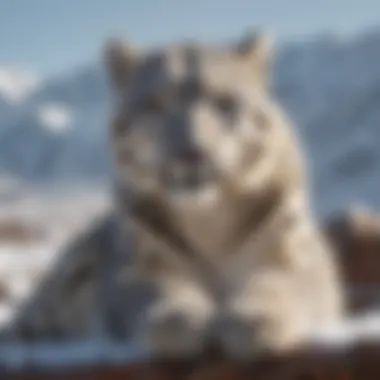
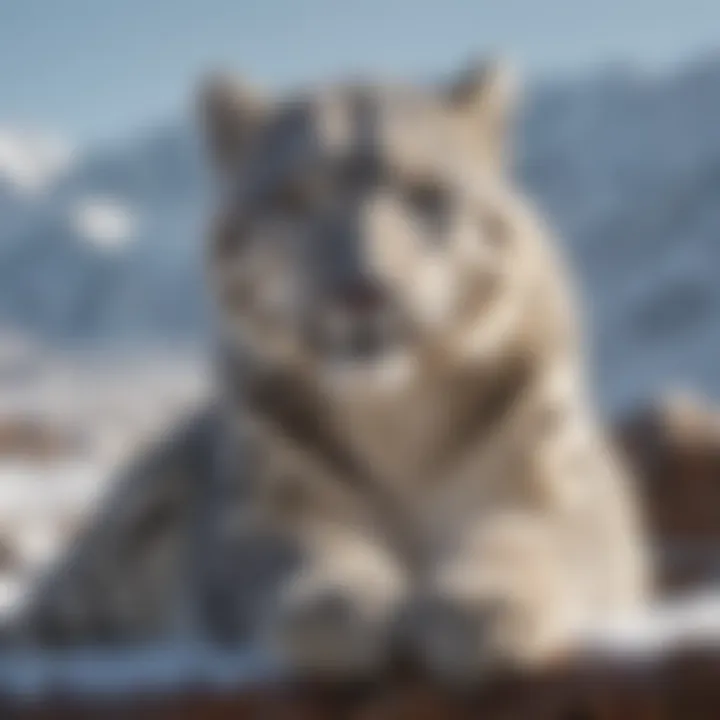
- Bhutan
- Nepal
- Pakistan
- China
- India
- Mongolia
These cats prefer alpine and subalpine zones, often residing at altitudes ranging from 3,000 to 4,500 meters (9,800 to 14,800 feet) above sea level. Their habitat is characterized by steep, rocky terrains, which provide excellent cover for hunting and evading humans.
Snow leopards are adapted to these high altitudes where the air is thin and temperatures often plunge below freezing. However, their habitat is threatened by various factors, which we will delve into in the following sections.
Habitat Loss
Habitat loss is a significant and pressing issue faced by snow leopards. These majestic cats depend on vast, undisturbed landscapes for hunting and breeding. Unfortunately, as human activity expands, these natural habitats are increasingly compromised. Understanding the nuances of habitat loss is crucial not just for the survival of snow leopards but for maintaining the ecological balance in their mountainous homes.
Human Encroachment
When people build houses, roads, and farms in places that used to be wild, it pushes snow leopards out of their homes. Imagine your favorite playground being replaced by a shopping mall�—it's hard to play in a parking lot! This is what happens to snow leopards when humans enter their territory. They can’t find food easily, and they might have to wander into areas where they shouldn't go, which can lead to conflict with humans.
- Urban Expansion: Cities are sprawling, and their borders are creeping further into snow leopard territory. The development of new settlements takes away space for these big cats to thrive.
- Infrastructure Development: Construction of roads and buildings cuts through their habitats and fragmentizes the areas in which they can live, making it harder for breeding and finding food.
Resource Extraction
Another big trouble for snow leopards is resource extraction. This means digging up what’s under the ground to find things like minerals and oil. It’s like finding treasure, but taking it can hurt the home of the snow leopards. The noise and disturbance from these operations scare off the animals and destroy their hunting grounds.
- Mining Activities: Open-pit mines can destroy vast stretches of land and reduce the prey population. With less food available, the snow leopard faces challenges in survival.
- Oil and Gas Exploration: This process requires a lot of equipment and people in remote areas, disrupting the natural environment snow leopards rely on.
Impacts of Agriculture
As populations grow, people need more food. This leads to more farming, which can push snow leopards even further away. Think about how crops can take up space—the fields spread out as farmers try to cultivate more land. In some cases, livestock grazing replaces the natural vegetation that snow leopards need to hunt.
- Grazing Land: Livestock can overgraze, leaving nothing for native wildlife to eat. With fewer wild animals around, snow leopards have a tougher time finding supper.
- Chemical Use in Farming: Pesticides and fertilizers can leak into the wild areas and harm the local wildlife, making the ecosystem less healthy for the snow leopards.
"Habitat loss not only affects snow leopards; it ripples through entire ecosystems, weakening the bonds that sustain wildlife and their environments."
The loss of habitat due to human activity is complex and multifaceted. Recognizing how each piece fits together helps in creating effective conservation strategies. By understanding the challenges posed by human encroachment, resource extraction, and agricultural expansion, we can work toward solutions that protect snow leopards and their essential habitats. The snow leopard's fate hangs in the balance; if these habitats are saved, so too might be their future.
Poaching and Illegal Trade
Poaching and illegal trade present significant challenges to the survival of the snow leopard. This majestic feline faces a grim future as demand for its fur and body parts drives poaching activities. The intricate web of illegal trade deeply affects not just the snow leopard population but also the ecosystems they inhabit.
Demand for Fur and Body Parts
The allure of snow leopard fur is undeniable. Many people see this luxurious fur as a sign of status, making it highly sought after in some markets. Apart from fur, body parts are also in demand for traditional medicine in certain cultures. This creates a perfect storm, as poachers are incentivized to capture these cats, leading to a drastic decline in their numbers.
The snow leopard suffers not just from direct killing but also from habitat destabilization due to poaching. As the population dwindles, the ecological balance shifts, harming prey species and other wildlife. This reinforces the critical need to combat such unlawful activities.
Efforts to Combat Poaching
Combatting poaching requires a multi-pronged approach. Firstly, education plays a crucial role. Increasing awareness among local communities about the importance of snow leopards can lead to greater participation in conservation efforts. When communities see the value of these big cats in maintaining the health of the ecosystem, they become less inclined to engage in poaching.
Law enforcement is another key element. In several countries, stricter penalties for poaching and increased patrolling of vulnerable regions have been implemented. Organizations like the Panthera Foundation work alongside local governments to strengthen these measures. They offer resources and training for park rangers to better protect these iconic predators, decreasing poaching incidents significantly.
Additionally, international cooperation is vital in tackling poaching. Many regions have formed alliances to share intelligence about illegal activities, making it more difficult for poachers to operate undetected. Such collaborations can lead to more effective tracking of both the culprits and the trade networks they thrive in.
"The fight against poaching is not just about saving a species; it's about preserving a future for all wildlife and ecosystems that depend on one another."
Climate Change
Climate change is a looming threat to snow leopards and their habitat. As temperatures rise and weather patterns shift, the delicate ecosystems that these majestic creatures rely on are starting to show signs of stress. It's more than just a far-off concern; it’s a pressing issue that affects their survival and, consequently, the health of the entire mountainous region they inhabit. Understanding how these changes impact snow leopards not only shines a light on their situation but also underscores our responsibility to act.
Effects on Habitat and Prey Availability
The snow leopard's habitat is primarily a rugged, cold environment where they thrive. However, climate change is impacting this ecosystem significantly. The warming temperatures lead to a shrinking of alpine meadows, which are crucial for their prey species, including blue sheep and ibex. As vegetation changes or declines due to changing climate, the animals that snow leopards hunt are likely to suffer as well.
- Loss of Prey: If the conditions in their habitat degrade, there will be fewer prey. As it stands, snow leopards need a large territory to hunt effectively, and if the prey is sparse, their numbers could dwindle.
- Competition with Other Predators: As landscapes change, other predators might also move into areas where snow leopards currently roam. This introduces not just competition, but also potential conflicts and a fight for resources.
- Disruption of Migration Patterns: Some species may adapt to the changing conditions by moving to different areas. This can further complicate the balance of the ecosystem, affecting not only food availability but also the relationships within it.
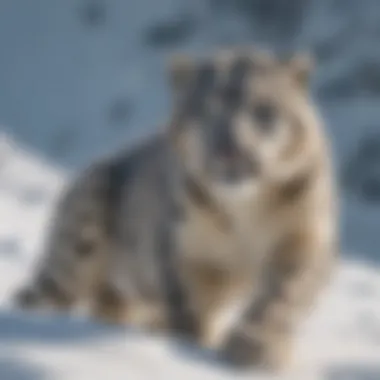
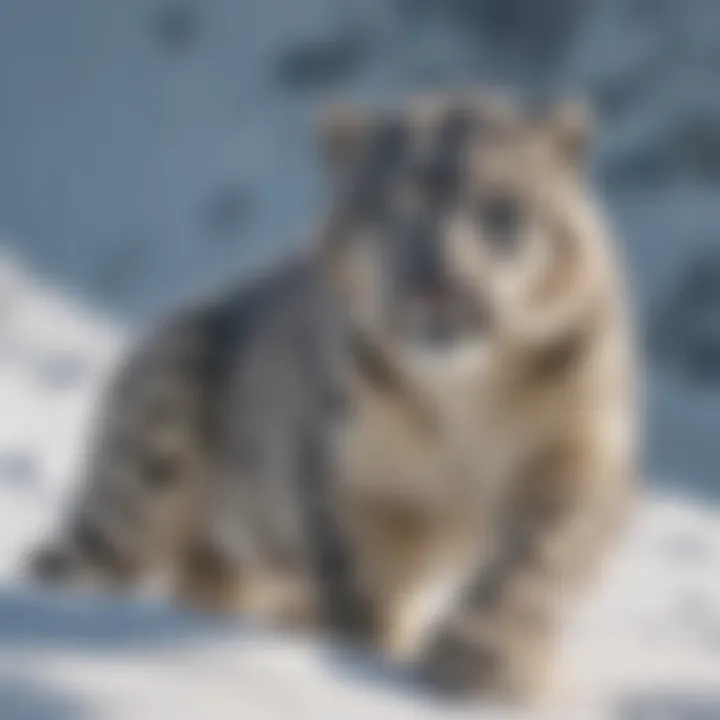
Understanding these effects is crucial for conservation efforts. Protecting their habitat ensures that both snow leopards and their prey can coexist in balance, safeguarding this intricate web of life.
Melting Glaciers and Water Resources
Another stark consequence of climate change affecting snow leopards is the melting of glaciers, which provides essential water sources in these arid regions. The Himalayas and surrounding mountain ranges are home to many glaciers that feed rivers and lakes, directly influencing both the animal populations and local communities.
- Water Scarcity: For both wildlife and people, water is a lifeline. As glaciers melt, there may be an initial abundance of water, but this can quickly turn into water scarcity in the future as these glaciers continue to retreat.
- Ecosystem Collapse: Many plants and animals rely on the steady flow of water; without it, habitats may become uninhabitable. The cascade effects of this could be astonishing, with entire ecosystems potentially failing.
- Impact on Livelihoods: Local communities that depend on these water sources for agriculture face the risk of losing their primary means of sustaining their families. Without their livelihoods, pressures may increase on snow leopards as humans encroach upon their territories in search of alternative means.
Human-Wildlife Conflict
Human-wildlife conflict can be a tricky subject, especially when it comes to snow leopards. These beautiful creatures often find themselves in a tough spot—caught between their natural instincts and the encroachment of human activities. Snow leopards primarily inhabit high-altitude regions, often overlapping with human settlements, where livestock is raised. This overlap inevitably leads to conflict over resources, especially when snow leopards prey on livestock out of necessity or hunger.
Livestock Predation
Livestock predation is a significant issue affecting communities living close to snow leopard habitats. These cats, adept at navigating tough terrains and hunting, find livestock like sheep and goats to be an easy target. From the animal's perspective, it’s a routine meal, but from a farmer's standpoint, a predator’s feast can mean economic hardship.
Imagine waking up to find that a snow leopard has taken a prized goat. That could spell trouble for families whose livelihoods depend on their livestock. When farmers witness their animals being killed, they often react out of anger or fear, sometimes leading to retaliatory killings of snow leopards. This creates a vicious cycle where the conflict escalates and snow leopard populations dwindle.
To address this, some communities are adopting preventive measures. These include:
- Guarding Livestock: Farmers can employ dogs trained to protect their herds from predators.
- Using Fencing: Simple barriers can deter snow leopards from approaching livestock.
- Educating the Community: Informing locals about the ecological importance of snow leopards helps foster a sense of coexistence.
Community Responses to Snow Leopards
Communities are also finding ways to coexist with these magnificent big cats, and it's a commendable step forward. Rather than viewing snow leopards solely as threats, some groups are starting to view them as valuable partners in managing the ecosystem. Here are a few community-responsive initiatives that are making a difference:
- Compensation Programs: Some governments and NGOs have initiated compensation schemes for farmers who lose livestock to snow leopards. This approach encourages farmers to report incidents rather than retaliate.
- Community Workshops: Local workshops can educate residents about the benefits of biodiversity and the critical role snow leopards play in maintaining the health of their ecosystem.
- Involvement in Conservation Efforts: When communities are involved in conservation projects, they begin to take ownership of their local wildlife. This helps shift the mindset from seeing leopards as foes to recognizing them as part of their natural heritage.
Ultimately, the key to resolving human-wildlife conflict lies in understanding and cooperation. By working together, we can figure out ways to protect both livestock and snow leopards, thereby preserving the delicate balance of nature.
Striking this balance is no easy feat, but with continued efforts and education, a brighter future can be crafted for both snow leopards and the humans who share their land.
Conservation Efforts
Conservation efforts are an essential piece in the puzzle for ensuring the future of snow leopards. These magnificent creatures play a crucial role in maintaining the ecosystem balance in their mountainous habitats. Their existence helps regulate populations of prey species, impacting vegetation and overall biodiversity. Without targeted action, these animals face numerous threats that can disrupt this balance. Engaging in conservation efforts not only facilitates the survival of snow leopards but also benefits the broader environmental health.
Protected Areas and Reserves
One of the cornerstones of conservation is the establishment of protected areas and reserves. These regions are designated to safeguard wildlife and their habitats from human encroachment and industrial activities. For snow leopards, protected areas like the Khangchendzonga National Park in India or the Tian Shan Mountains region help provide a refuge where they can thrive away from growing development pressures.
- Biodiversity Preservation: Protected areas are not solely for snow leopards; they also ensure that a wide range of species can flourish. This promotes a rich biodiversity that is vital for ecological stability.
- Research Opportunities: These reserves also serve as sites for scientists and wildlife biologists to conduct essential research. Understanding snow leopard behavior and their interaction with the ecosystem leads to better conservation strategies.
- Sustainable Tourism: When managed well, tourism in protected areas can raise awareness and encourage local economic growth without harming the environment. It can create a win-win scenario where communities benefit financially while snow leopards remain safely in the wild.
Community Involvement in Conservation
As the saying goes, "It takes a village to raise a child"; it can also be said that it takes a community to protect the snow leopard. Local communities are vital in the conservation equation. When people living in close proximity to snow leopards are engaged, it leads to more sustainable practices that benefit both humans and wildlife.
- Education and Awareness: Programs that teach locals about the importance of snow leopards help change perceptions. When communities understand that protecting these big cats benefits their environment, they often become vested allies in conservation efforts.
- Compensation Programs: Many regions implement compensation systems for farmers who lose livestock due to predation by snow leopards. This approach alleviates conflicts and builds goodwill between communities and conservation organizations. When farmers feel protected, they are more likely to work alongside conservationists.
- Community-led Initiatives: Encouraging communities to develop their own conservation projects fosters ownership. Local involvement in conservation ensures that practices are culturally relevant and effectively address community needs.
International Cooperation and Policies
Wider cooperation across borders can significantly boost conservation outcomes. Snow leopards inhabit mountainous regions that span several countries, so it makes sense that conservation strategies should too. Collaborative efforts among nations are essential to conserving this extraordinary species.
"Joint conservation action can have a ripple effect, leading to shared benefits that transcend borders."
- Bilateral Agreements: Countries like India, Bhutan, and Nepal have begun to recognize the importance of working together, setting up agreements to share resources and strategies that enhance snow leopard protection.
- Global Initiatives: Organizations such as the Snow Leopard Trust and the International Snow Leopard Conservancy work globally to facilitate knowledge-sharing and fund conservation projects in various habitats.
- Policies and Enforcement: Establishing comprehensive conservation policies and ensuring their enforcement is vital. This means not just protecting snow leopards but also addressing factors like climate change and habitat degradation through joint action.
Through these conservation efforts—establishing protected areas, involving local communities, and fostering international cooperation—the future of snow leopards can be more secure. Every action taken today can have a lasting impact on tomorrow's world.
The Ecological Role of Snow Leopards
Snow leopards are not just beautiful big cats roaming the high mountains of Central and South Asia; they play a vital role in maintaining the health of their ecosystem. Understanding their ecological role helps us appreciate their significance beyond their endangered status. These apex predators are integral to the balance of their habitat, influencing both the animal and plant life around them.


Top Predators and Biodiversity
Snow leopards sit at the top of the food chain, which means their hunting habits have a profound effect on other species. They typically prey on animals like ibex, sheep, and smaller mammals. By keeping these prey populations in check, snow leopards help maintain a balance within the ecosystem. If these larger herbivores were to overpopulate, they could overgraze, leading to habitat degradation.
So in a way, snow leopards act like nature's regulators. When they thrive, the biodiversity of their environment flourishes too. Other species depend on this balance as well. Here's how:
- Health of Prey Species: Healthy predator populations, like that of the snow leopard, ensure that prey species do not escalate in numbers to unsustainable levels.
- Nutrient Recycling: The carcasses of prey left behind provide crucial nutrition to scavengers, which in turn supports a diverse range of wildlife.
Indicator Species for Ecosystem Health
Snow leopards are also considered an indicator species. This means that their presence or absence can tell us a lot about the health of the environment. When snow leopards flourish, it often indicates that the ecosystem is in good shape. On the flip side, if their numbers decline, it may signal underlying problems that might not be immediately visible.
Here’s a deeper look into why this matters:
- Ecosystem Balance: Their decline may point to issues such as loss of habitat or declining prey populations, which can affect many other species.
- Conservation Efforts: Protecting the snow leopard also involves protecting many other species within their habitat, making the effort to conserve them key for overall ecosystem health.
- Cultural Significance: In many local cultures, snow leopards are revered, and their presence can influence conservation values in communities.
"The snow leopard serves as a litmus test for ecological health; its struggles are a reflection of our environmental challenges."
In summary, the snow leopard is more than just an iconic creature; it's a cornerstone of its ecosystem. By keeping prey populations in check and serving as an indicator of environmental health, they play a crucial role that sustains biodiversity. Each snow leopard transmits a message about the health of its natural habitat while silently advocating for compassion towards nature's delicate balance.
Future Outlook
The future of snow leopards hinges critically on several interconnected factors. Understanding the projected trends for their population and the role technology plays in conservation efforts marks crucial steps in safeguarding these rare big cats. Through comprehending these significant elements, stakeholders such as communities, conservationists, and local governments can adopt more effective strategies to ensure the survival of this iconic species.
Predicting Population Trends
Population trends of snow leopards are important indicators of the species' overall health and the condition of their habitat. Various studies suggest that if current threats are mitigated, snow leopards could maintain stable populations in the wild. This stability is underpinned by several factors:
- Habitat Availability: If conservation measures are taken to protect their alpine and subalpine habitats, snow leopards stand a better chance of thriving. Mitigating habitat loss is critical, as it allows their prey to flourish as well.
- Reducing Poaching: Enhanced law enforcement and community awareness have shown promising results in cutting down poaching rates. Fewer snow leopards killed mean a better chance for the population to grow.
- Climate Resilience: If global efforts to combat climate change succeed, and temperatures within their range remain conducive to snow leopard survival, their populations can recover.
"The success of snow leopards in the future relies heavily on our actions today. Protecting them is like safeguarding an intricate tapestry of life in the mountains."
However, forecasting these trends can be complex. Continued monitoring and research, encompassing genetic studies and ecological surveys, can help in making educated predictions about how many of these majestic cats might roam the mountains in the decades to come.
Role of Technology in Conservation
Technology has emerged as a powerful ally in the fight to protect snow leopards. Various modern methods are changing the landscape of conservation:
- Camera Traps: These devices are invaluable for studying snow leopards in their natural habitat. By using motion-activated cameras, conservationists can track population sizes and behaviors without intruding.
- GPS Collar Tracking: Attaching collars with GPS capabilities to individual snow leopards provides real-time data about their movements and habitat preferences. This information is crucial for making informed conservation decisions.
- Drones: Often seen as an eye in the sky, drones help in monitoring vast landscapes, making it easier to find and study these elusive cats without disrupting their environment.
- Community Tracking Apps: Local communities can report sightings through applications, fostering a connection between technology and traditional wildlife observation.
As conservation strategies become more data-driven, integrating technology not only aids in immediate protective measures but also lays a foundation for long-term ecological management. By leveraging these advancements, we can create more robust action plans that benefit not just snow leopards but the entire ecosystems in which they play a vital role.
Closure
The journey we’ve taken through the many challenges facing snow leopards sheds light on something that really matters. It’s not just about this beautiful big cat, but also about maintaining the balance in the ecosystems they represent. Understanding these threats helps us grasp why immediate action is crucial.
Conservation is not a solo act; it is a team effort involving various stakeholders.
When we talk about snow leopards, it’s vital to recognize that they are more than just animals spending their days in the mountains. They play a key role in their habitat by controlling prey populations and promoting biodiversity. If their future is compromised, we can expect domino effects that may disrupt entire ecosystems.
Summarizing the Importance of Action
The reasons to take action are crystal clear. First, endangered snow leopards are often seen as indicators of environmental health. Their declining numbers signal problems in their ecosystem that could affect other species, too. Protecting them means safeguarding the entire landscape they inhabit.
Additionally, taking action helps preserve cultural values. In many regions, snow leopards are part of local folklore and identity.
Moreover, the knowledge that comes from successful conservation programs can be valuable. Programs that foster local engagement not only provide people with a sense of ownership over their natural surroundings but can also turn economic challenges into opportunities for sustainable livelihoods.
Encouraging Local and Global Support
To really make a difference, it requires both local dedication and global awareness. Building local support involves educating communities about the ecological significance of snow leopards. Activities like community workshops or school programs can raise awareness about their plight.
Moreover, international cooperation is essential; it’s all about connecting. Global efforts like the Global Snow Leopard and Ecosystem Protection Program (GSLEP) are avenues for countries that share these magnificent animals to collaborate.
seeking donors and partnerships also plays a significant role in funding effective conservation methods.
"Our choices today shape the climate for future generations, both human and animal."
In a nutshell, the conservation of snow leopards requires a collective push. It’s not just about saving one species; it’s about preserving the intricate web of life that they support. We have the chance to stand up for these big cats and their homes, making sure they thrive for years to come.







